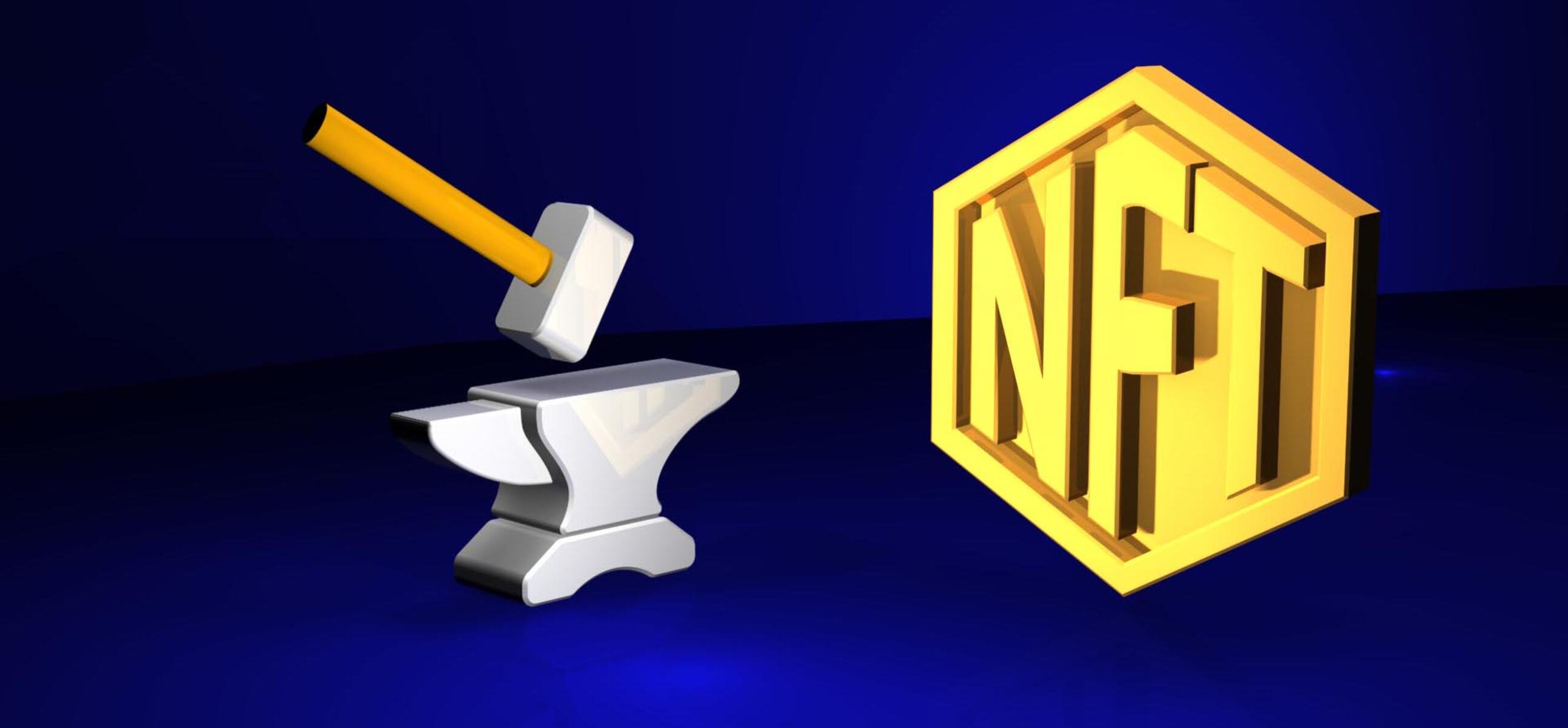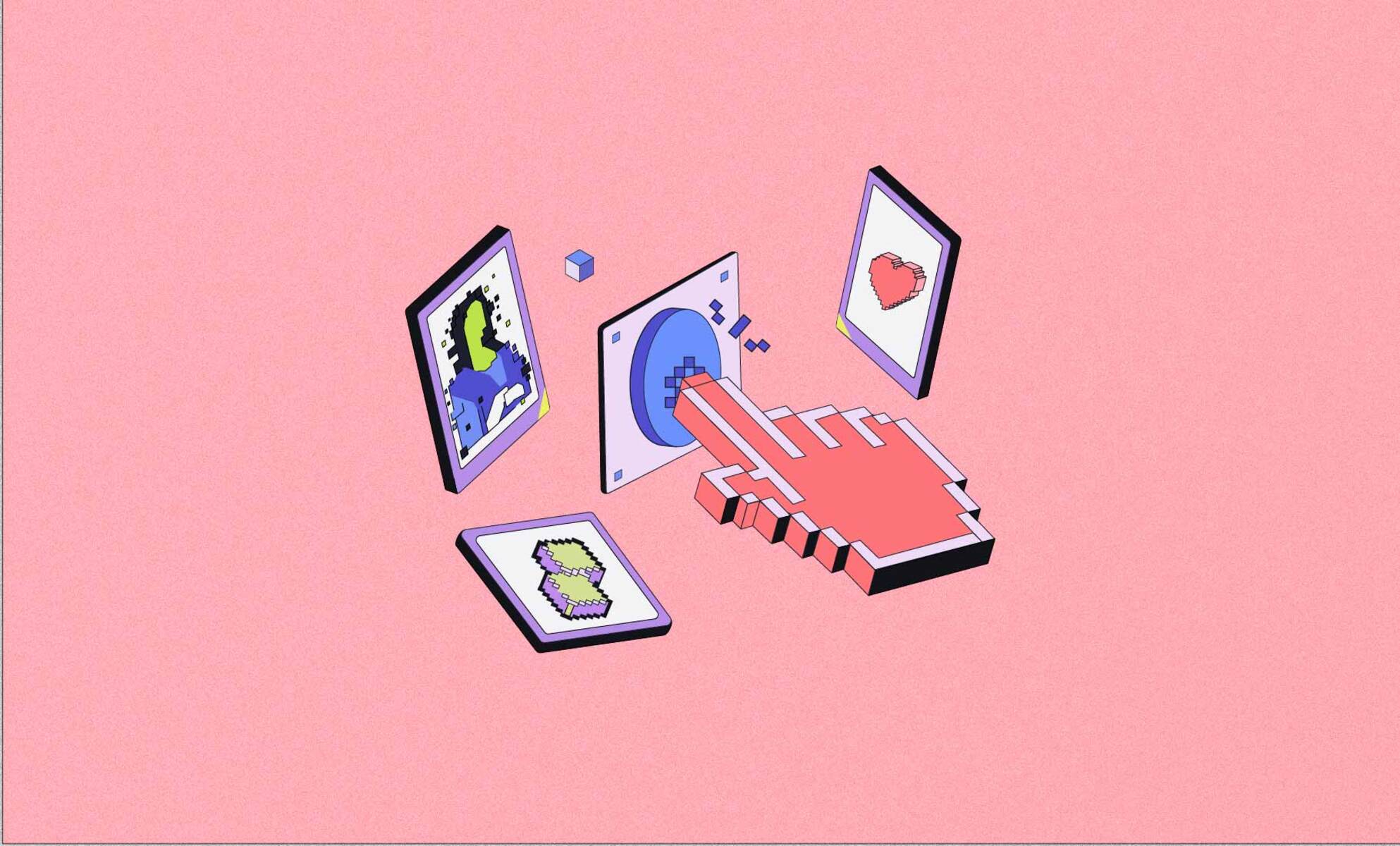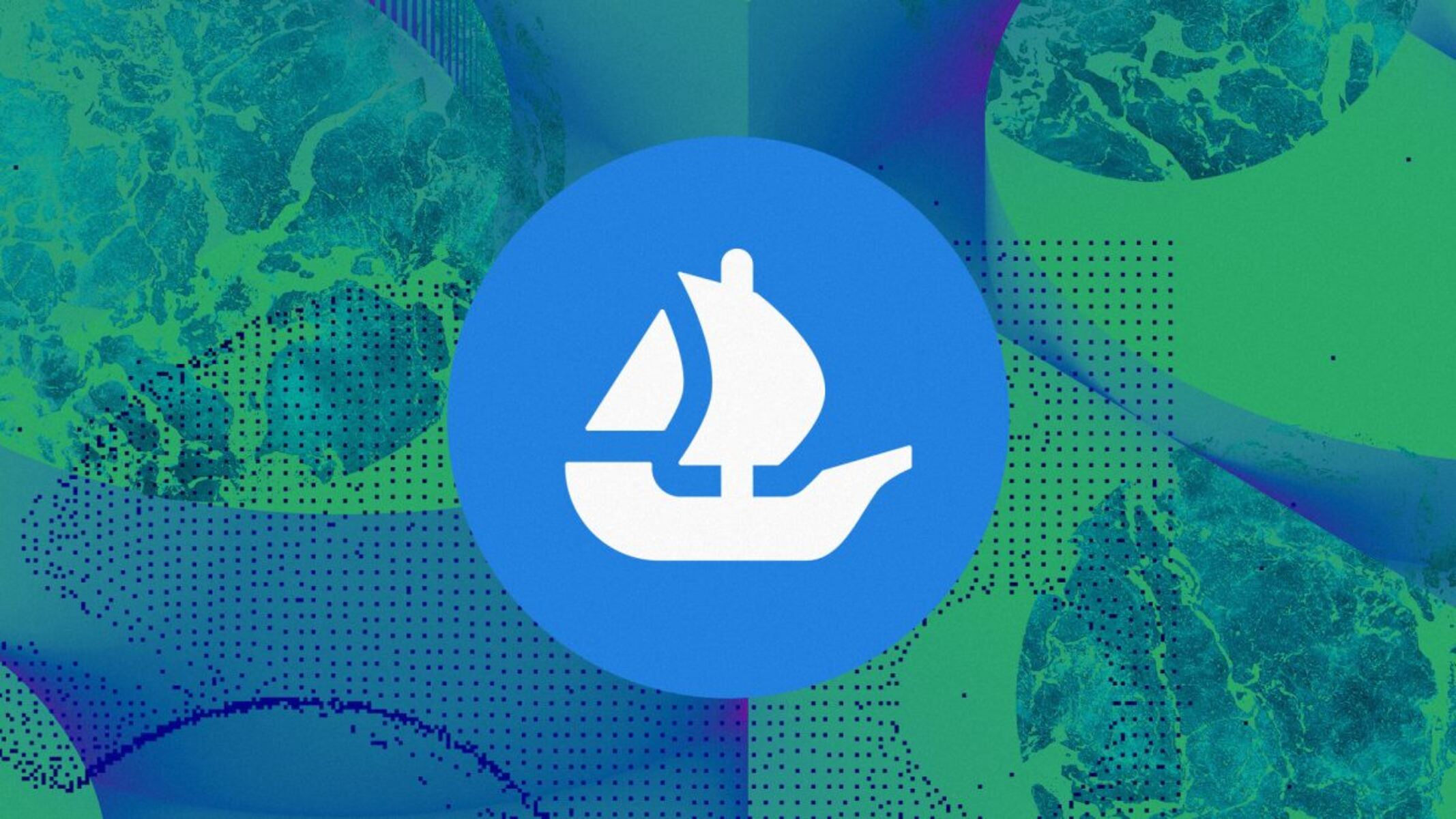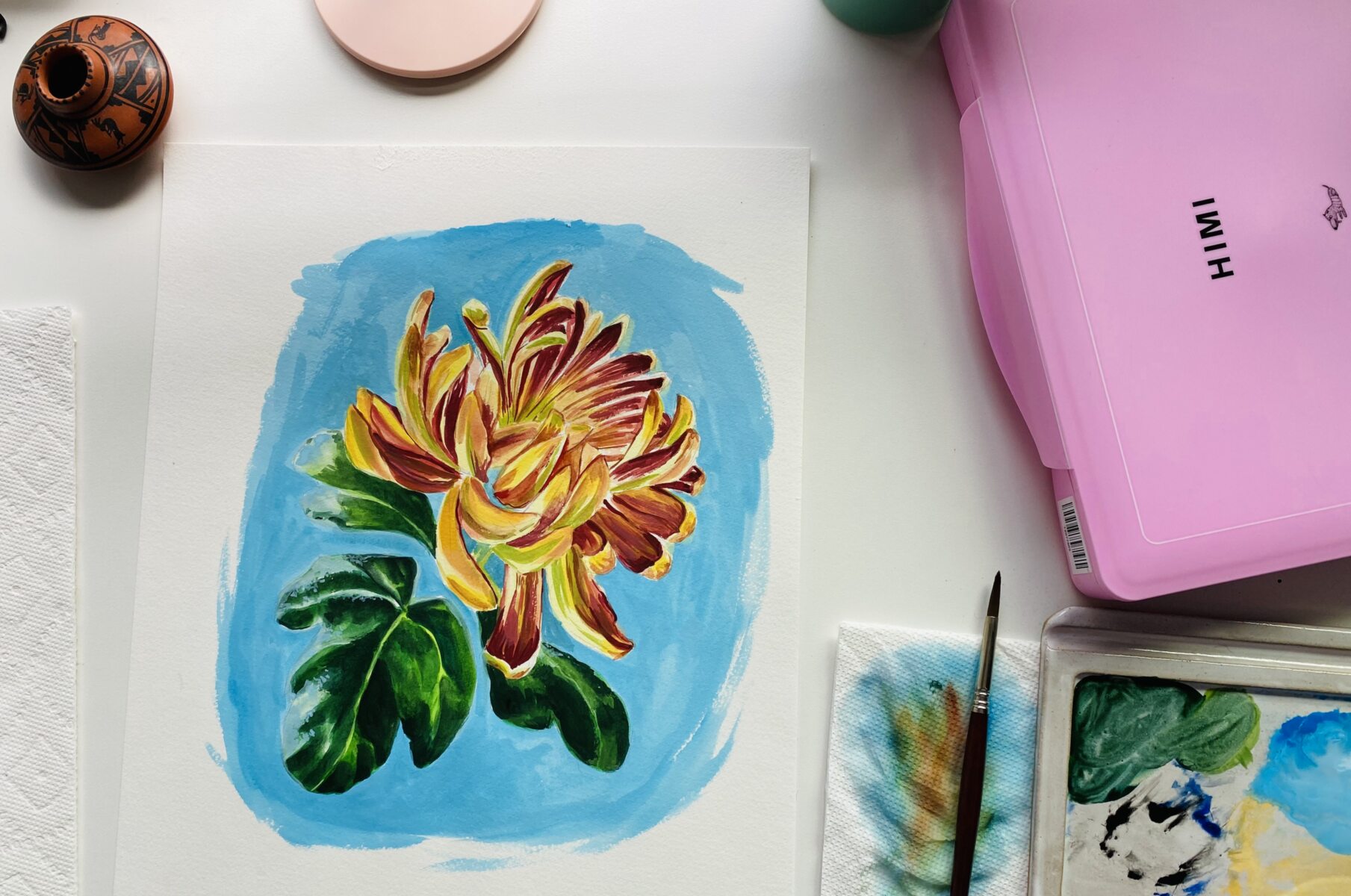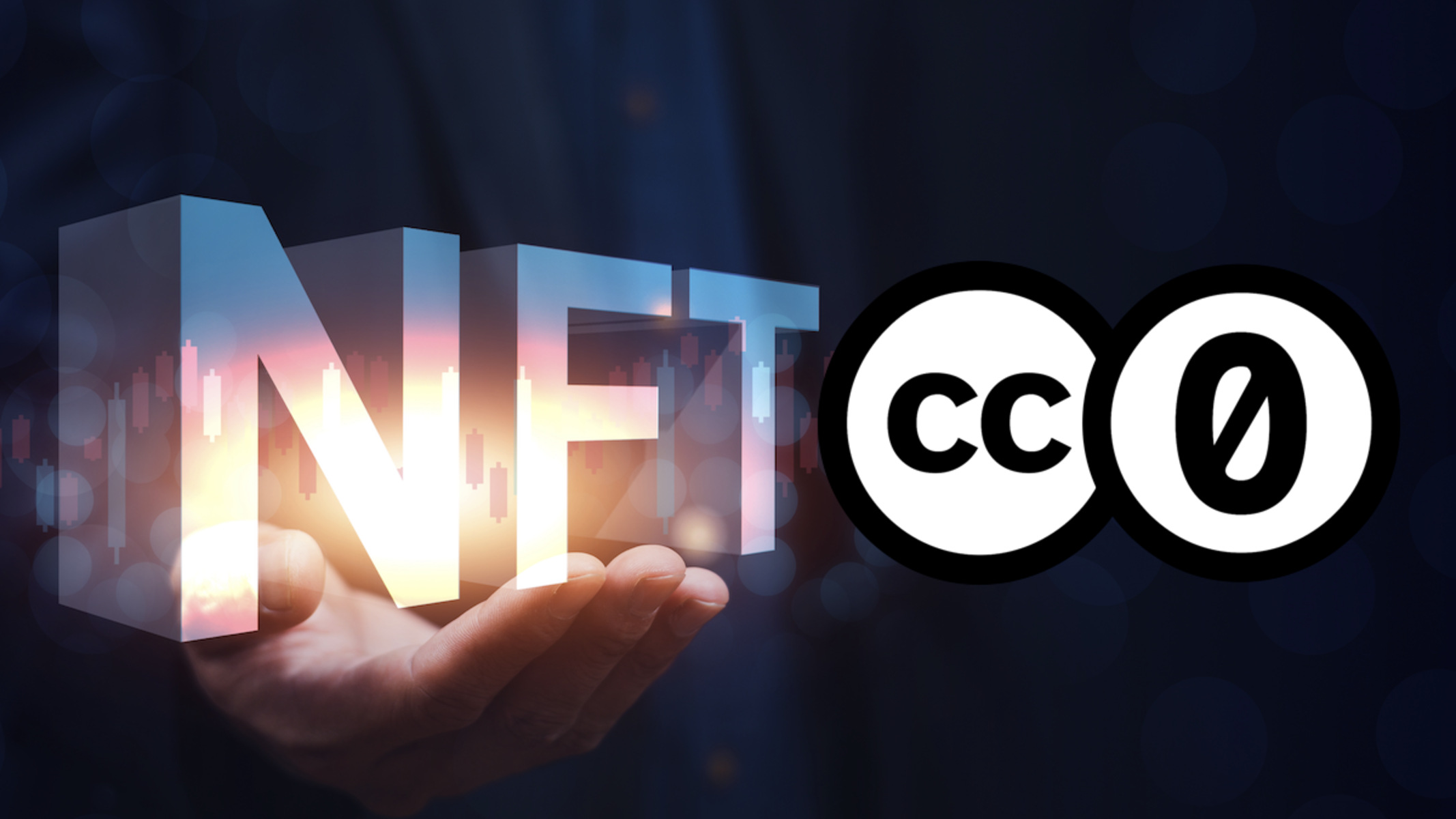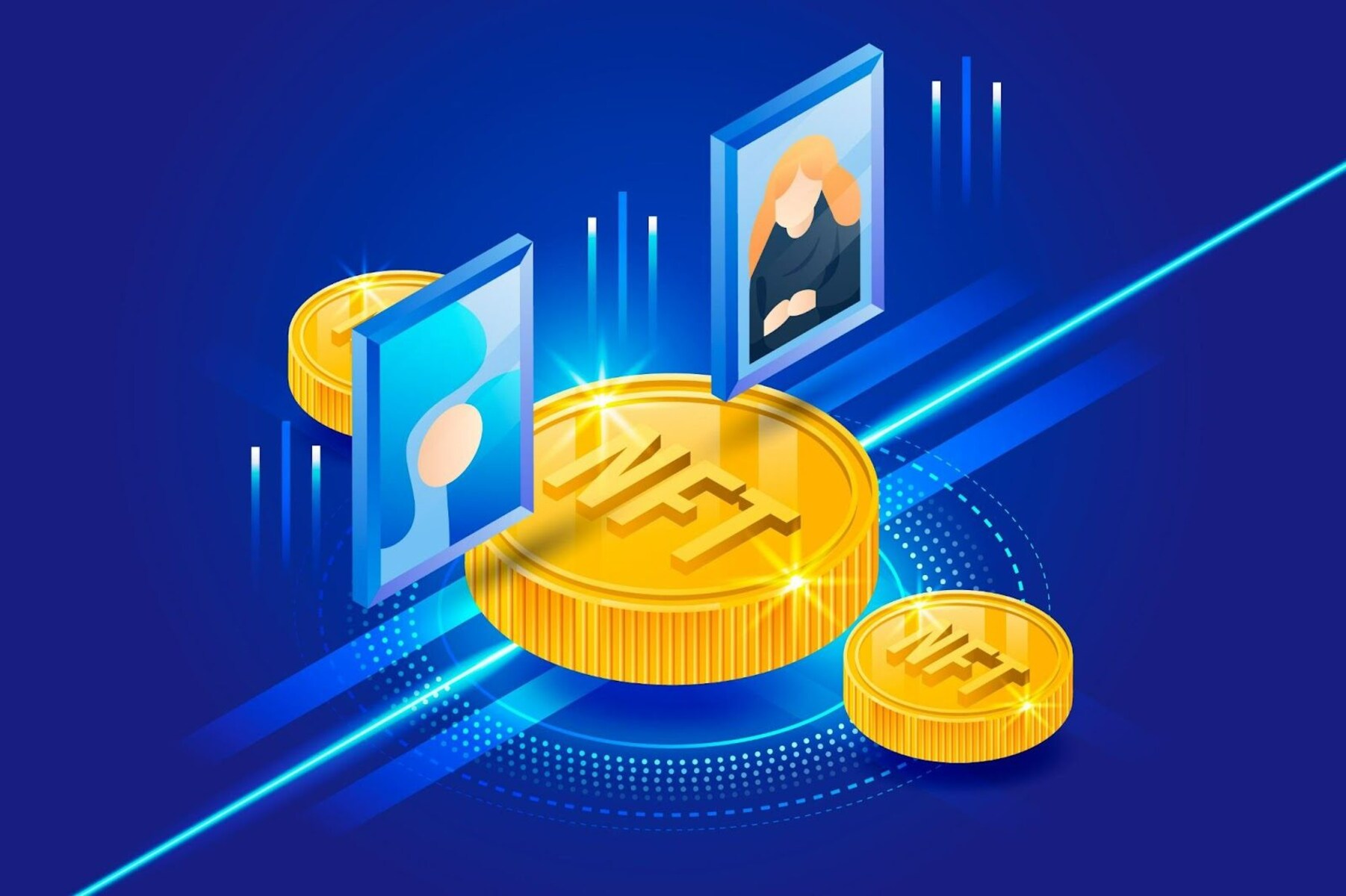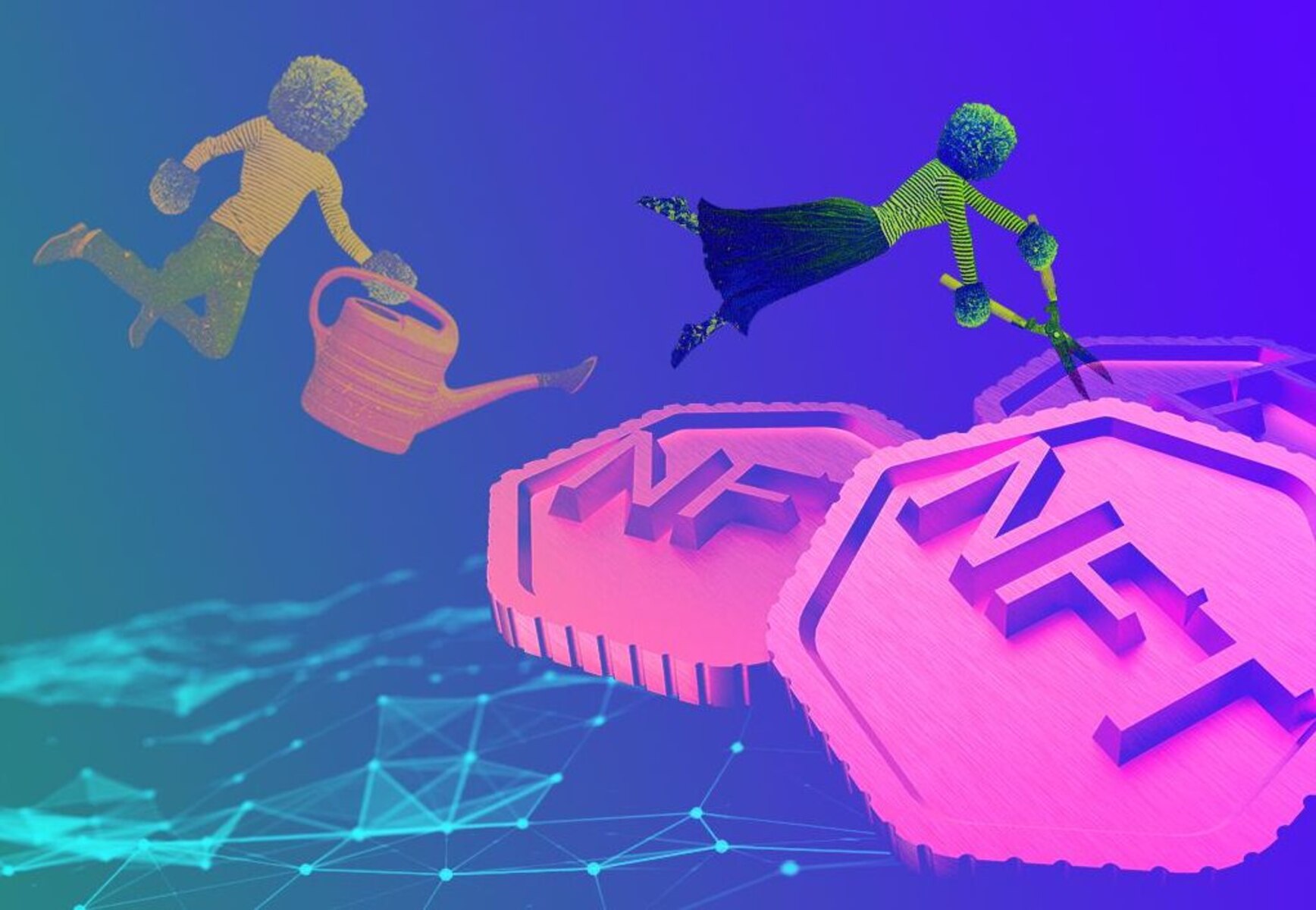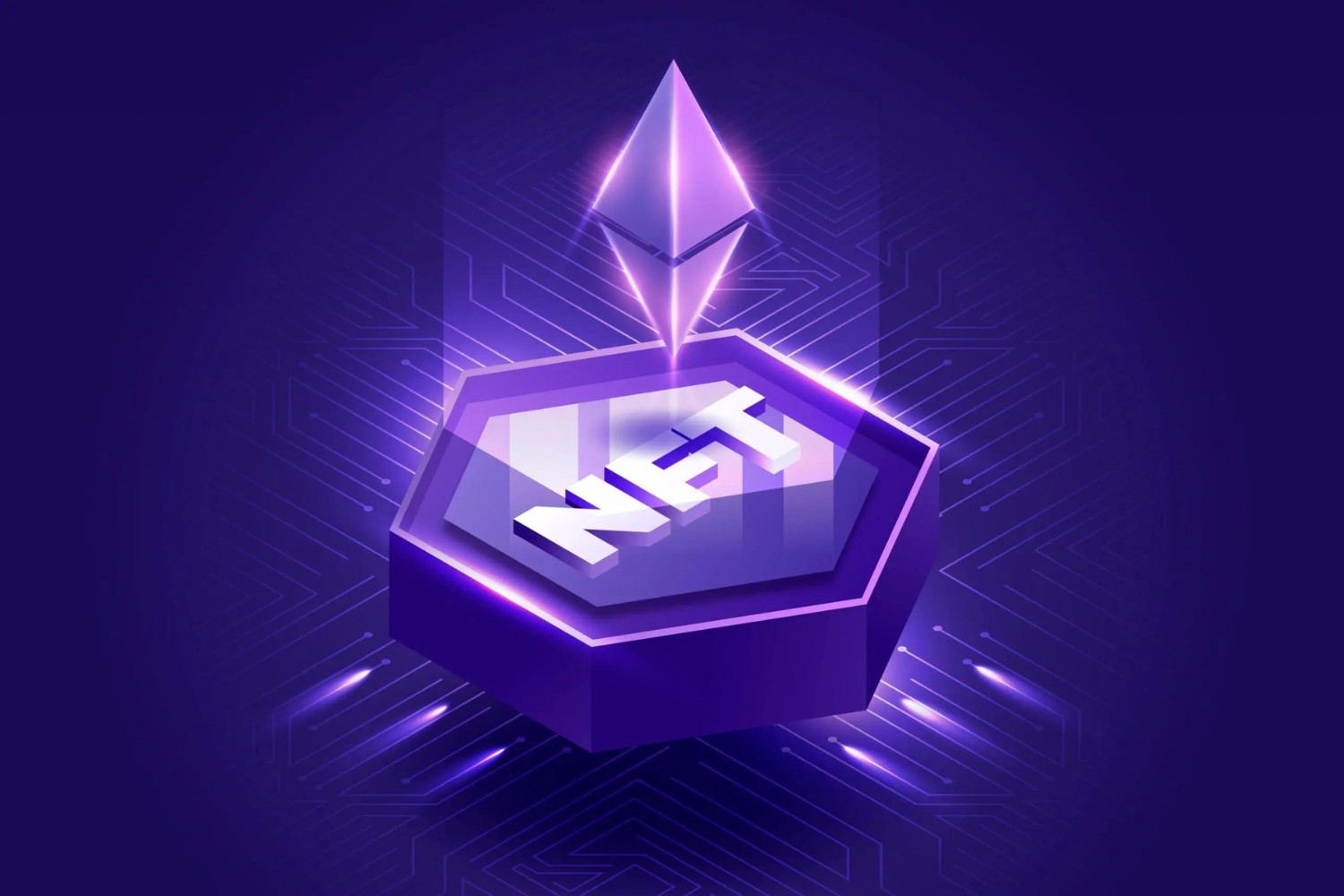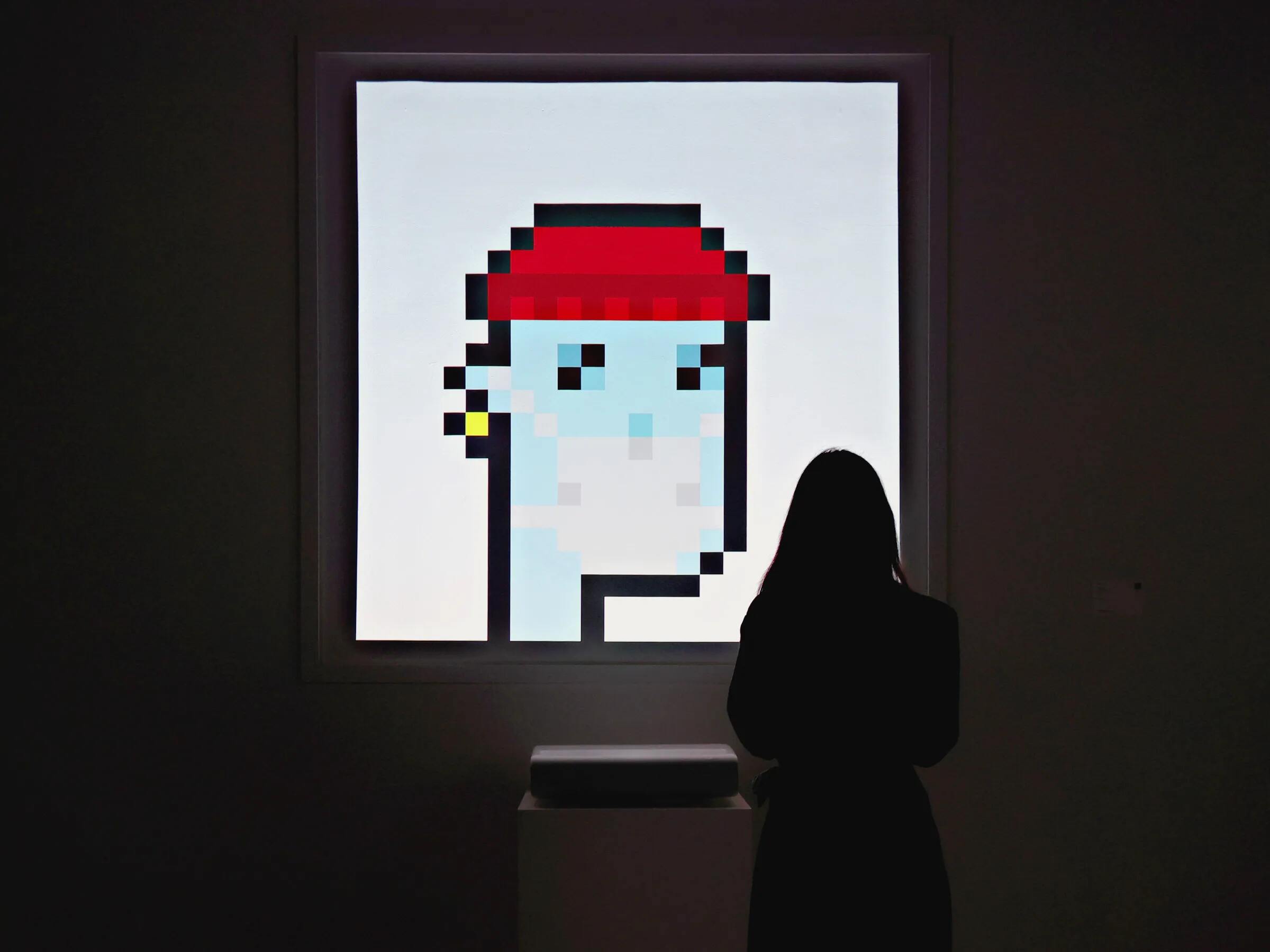Introduction
Welcome to the fascinating world of non-fungible tokens (NFTs)! In recent years, NFTs have gained widespread attention as a unique and innovative way to buy, sell, and collect digital assets. From digital artwork and music to virtual real estate and gaming items, NFTs have opened up a whole new realm of possibilities in the digital economy.
Unlike cryptocurrencies such as Bitcoin and Ethereum, which are interchangeable and hold the same value, NFTs are unique and indivisible. Each NFT contains distinct information that sets it apart from other tokens, making it one-of-a-kind and easily verifiable on the blockchain.
If you’re intrigued by the concept of NFTs and want to learn how to mint your own, you’ve come to the right place. In this guide, we’ll walk you through the process of creating and minting an NFT for free.
Before we delve into the technical aspects of minting NFTs, it’s important to choose the right platform. There are several popular platforms available, such as OpenSea, Rarible, and Mintable, each with its own set of features and community. Researching and selecting the platform that aligns with your goals and artistic style is crucial for a successful NFT minting experience.
Once you’ve chosen your platform, the next step is to create your artwork or collectible. This is where your creativity truly shines. Whether you’re a digital artist, a photographer, or a designer, NFTs provide a unique opportunity to showcase and monetize your talent in the digital landscape.
After creating your artwork, you’ll need to prepare it for minting. This involves ensuring that your file meets the specific requirements of the platform you’re using. Pay attention to the recommended file formats, sizes, and any additional guidelines provided by the platform to ensure a smooth minting process.
With your artwork ready, it’s time to mint your NFT. While some platforms charge fees for minting, there are also platforms that offer free or low-cost solutions. We’ll guide you through the process of minting your NFT step-by-step, regardless of your budget.
Setting the right price and royalties for your NFT is an important consideration. It’s crucial to find a balance that reflects the value of your work while attracting potential buyers. We’ll explore strategies for pricing your NFT and setting appropriate royalty percentages to ensure you receive fair compensation for your creations.
Once your NFT is minted and listed for sale, promoting your artwork is essential to attract buyers and increase its visibility. We’ll provide you with effective promotion strategies, including leveraging social media, engaging with the NFT community, and collaborating with influencers to maximize the reach of your NFT.
Finally, selling your NFT is the ultimate goal. We’ll discuss the various ways to sell your NFT, such as direct sales, auctions, and secondary marketplaces. Understanding the different selling options will empower you to make informed decisions that suit your objectives and preferences.
So, are you ready to embark on your NFT minting journey? Let’s dive in and explore the exciting world of NFTs, where digital art meets blockchain technology, and creativity knows no bounds.
Understanding NFTs
If you’re new to the world of NFTs, it’s important to have a solid understanding of what they are and how they work. NFTs, or non-fungible tokens, have gained immense popularity in recent years, revolutionizing the way digital assets are bought, sold, and owned.
Unlike cryptocurrencies that are fungible and can be exchanged on a one-to-one basis, NFTs are unique and indivisible. Each NFT represents a distinct item or piece of content, whether it’s digital artwork, music, videos, virtual real estate, or even virtual collectibles in games. Think of NFTs as digital certificates of authenticity that prove ownership and establish scarcity in the digital realm.
NFTs are built on blockchain technology, typically utilizing the Ethereum blockchain. The blockchain serves as a decentralized ledger that records the ownership and transaction history of each NFT. This ensures transparency and immutability, making it nearly impossible to forge or manipulate ownership records.
One of the key features of NFTs is their ability to incorporate verifiable metadata. This metadata can include details about the artist, creation date, edition number, and even unlockable content. It provides additional context and value to the NFT, making it more meaningful and desirable to collectors.
Another important aspect of NFTs is the concept of royalties. The creators of NFTs can set royalty percentages, which entitle them to a portion of the proceeds generated from subsequent sales of their NFTs. This provides artists with the opportunity to earn ongoing income and benefit from the increasing value of their creations.
One common question that arises is the environmental impact of NFTs. Due to the energy-intensive nature of blockchain networks, particularly proof-of-work protocols, concerns have been raised about the carbon footprint associated with minting and trading NFTs. It’s important to acknowledge these concerns and explore alternative blockchain solutions, such as proof-of-stake, that offer more sustainable options for NFT creation and ownership.
The rise of NFTs has sparked a cultural shift in the art world, enabling artists to reach global audiences and unlock new revenue streams. The scarcity and authenticity of NFTs have given rise to a vibrant marketplace where collectors and enthusiasts can discover and support emerging artists.
While NFTs have gained significant attention and generated astronomical sums in some cases, it’s important to approach this space with caution and conduct thorough research. As with any investment or creative pursuit, understanding the market, the platform you’re using, and the potential risks is essential.
Now that you have a solid understanding of NFTs and their underlying technology, it’s time to explore the process of minting your own NFT. In the next section, we’ll discuss the key considerations for choosing the right platform to showcase and sell your digital creations.
Choosing the Right Platform
When it comes to minting and selling your NFTs, choosing the right platform is crucial. The platform you select will impact your ability to showcase your artwork, reach potential buyers, and ultimately monetize your creations. With numerous platforms available in the NFT space, it can be overwhelming to make a decision. Here are some key factors to consider when choosing the right platform:
1. Reputation and Trustworthiness: It’s important to select a platform with a good reputation and a track record of successfully facilitating NFT sales. Look for platforms that have a strong community, positive reviews, and transparent practices. Research the platform’s history, security measures, and any incidents they may have had in the past.
2. User-Friendliness: Consider the platform’s user interface and ease of use. A user-friendly platform makes the process of minting and listing your NFTs straightforward and intuitive. Look for platforms that have clear instructions, easy-to-navigate interfaces, and helpful support channels.
3. Target Audience: Different platforms cater to different types of NFTs and audiences. Some platforms focus solely on digital art, while others may have a broader range of collectibles or specialized niches. Consider your target audience and the type of artwork or collectible you are creating. Choose a platform that aligns with your target market to maximize exposure and potential sales.
4. Platform Fees: Take into account the fees charged by the platform for minting, listing, and selling your NFTs. Some platforms have fixed fees, while others may charge a percentage of each transaction. Compare the fee structures of different platforms and assess how they align with your budget and revenue goals.
5. Community and Marketing Opportunities: Look for platforms that have an active and engaged community. A vibrant community can provide valuable networking opportunities, exposure for your artwork, and potential collaborations. Additionally, some platforms offer marketing initiatives to promote the NFTs listed on their marketplace. Research the platform’s marketing efforts and assess how they can benefit your NFT’s visibility.
6. Secondary Market Support: Consider if the platform offers a secondary market where your NFTs can be traded after the initial sale. A secondary market provides liquidity and the potential for your NFTs to appreciate in value over time. Check if the platform has a strong secondary market presence and if there is demand for NFTs on their marketplace.
By taking these factors into account, you’ll be able to narrow down your options and choose the platform that best suits your goals and preferences. Remember, it’s not a one-size-fits-all approach, and you may find success by listing your NFTs on multiple platforms to maximize exposure and reach a diverse audience.
Now that you have evaluated the platforms and selected the right one for your NFTs, it’s time to move on to the next step: creating and preparing your artwork or collectible for minting. We’ll explore this process in detail in the upcoming section.
Creating Your Artwork or Collectible
Creating your artwork or collectible is an integral part of the NFT minting process. This is your opportunity to showcase your creativity and bring your unique vision to life in the digital realm. Whether you’re a digital artist, a photographer, a designer, or even a creator in the gaming industry, NFTs provide a platform to monetize your talent and reach a global audience. Here are some key considerations when creating your NFT:
1. Originality and Uniqueness: When creating your artwork or collectible, strive for originality and uniqueness. NFTs are all about owning something exclusive and one-of-a-kind. Stand out from the crowd by incorporating your personal style, experimenting with different techniques, or exploring unconventional themes. Ensure that your creation offers something special that cannot be easily replicated or found elsewhere.
2. Quality and Resolution: Pay attention to the quality and resolution of your artwork. NFT platforms typically have guidelines regarding the recommended file formats and sizes. Aim for high-resolution images or files that showcase the details and intricacies of your creation. High-quality visuals can enhance the perceived value of your NFT and attract potential buyers.
3. Storytelling and Context: Consider adding a narrative or context to your artwork. NFTs can be more than just visual representations – they can tell stories, convey emotions, or make social or political statements. Think about how you can infuse meaning or symbolism into your creation, making it more engaging and thought-provoking for the viewers.
4. Consider the Medium: NFTs are not limited to traditional visual art. Explore different mediums and formats that align with your artistic style. It could be music, videos, animations, virtual reality experiences, or even interactive elements. Embrace the digital nature of NFTs and experiment with new ways to captivate and engage your audience.
5. Intellectual Property Rights: Keep in mind the intellectual property rights surrounding your artwork. Ensure that you have the necessary permissions and rights to use any copyrighted materials, such as images or music. Additionally, consider whether you want to retain any rights or offer exclusive ownership of your NFT to the buyer.
Remember, the creation process is an opportunity for self-expression and exploration. Don’t be afraid to take risks, push boundaries, and let your creativity soar. It’s also worth seeking feedback and constructive criticism from your peers or mentors to refine and improve your work.
Once your artwork or collectible is complete, you’re ready to move on to the next step: preparing your creation for minting. We’ll discuss the important considerations for preparing your artwork in the upcoming section.
Preparing Your Artwork for Minting
Before you can mint your artwork as an NFT, it’s essential to prepare it properly. Each NFT platform may have specific requirements and guidelines regarding file formats, sizes, and additional metadata. By following these preparation steps, you can ensure a seamless minting process and enhance the presentation of your NFT. Here’s what you need to consider:
1. File Formats: Check the recommended file formats allowed by the platform you’ve chosen. Common file formats for images include JPEG, PNG, and GIF, while audio files may be accepted in formats like WAV or MP3. Understanding the preferred formats will ensure that your artwork can be easily viewed and accessed by potential buyers.
2. File Size and Dimensions: Platforms usually have restrictions on the maximum file size and dimensions. Compress your files, if necessary, to meet their requirements without compromising the quality of your artwork. Keep in mind that larger file sizes may take longer to load, potentially impacting the user experience.
3. Metadata: Metadata provides additional information about your NFT, such as the title, description, and artist name. It’s essential to write a compelling and informative description that accurately represents your artwork or collectible. Use keywords strategically to improve discoverability in search results. Additionally, consider including any relevant hashtags or tags that align with your artwork’s themes or genre.
4. Editions and Unlockable Content: Some platforms allow artists to create limited editions of their NFTs or offer unlockable content for buyers. If you’re interested in showcasing your artwork in different editions or providing exclusive content, explore the platform’s features and guidelines for implementing these options.
5. Proof of Authenticity: Consider adding a digital signature or watermark to your artwork to further establish its authenticity. This can be achieved by including your artist’s signature or logo within your artwork or embedding a unique identifier in the metadata. Providing proof of authenticity adds value and credibility to your NFT.
6. License and Terms of Use: Decide on the licensing terms for your NFT. You can choose to retain full copyright, offer a limited license, or apply a Creative Commons license that specifies the rights granted to the buyer. Clarify any restrictions or permissions associated with the usage or reproduction of your artwork.
Lastly, before minting your NFT, it’s crucial to thoroughly review and validate your artwork and metadata. Double-check that all the necessary information is accurate, and your artwork meets the platform’s guidelines. Taking the time to prepare your artwork properly will contribute to a successful minting experience and increase the chances of attracting interested buyers.
Now that your artwork is prepared, let’s move on to the exciting part: minting your NFT for free. In the next section, we’ll guide you through the step-by-step process to bring your artwork to the blockchain.
Minting Your NFT for Free
Creating and minting an NFT doesn’t have to be an expensive endeavor. Many platforms offer free or low-cost options for artists to mint their digital creations as NFTs. By following these steps, you can mint your NFT without breaking the bank:
1. Choose a Free or Low-Cost Platform: Research platforms that offer free or affordable minting options. Platforms like OpenSea, Rarible, and Mintable provide creators with the ability to mint NFTs at minimal or no cost. Compare the features, fees, and community support of these platforms to determine the best fit for your needs.
2. Create an Account: Sign up for an account on the chosen platform. Provide the necessary information and complete any required verification processes. This ensures a secure and trustworthy environment for your NFT minting journey.
3. Connect Your Digital Wallet: A digital wallet is necessary for managing your NFTs and participating in transactions on the blockchain. Connect your digital wallet, such as MetaMask or Trust Wallet, to the platform. Follow the platform’s instructions on how to set up and link your wallet securely.
4. Upload Your Artwork: Once your wallet is connected, you can start the minting process. Upload your prepared artwork or collectible to the platform. Ensure that you are following the platform’s image guidelines such as file format, size, and resolution. Provide the necessary metadata, including the title, description, and any additional details that enhance the value and understanding of your NFT.
5. Determine Minting Parameters: Set the parameters for your NFT, including the quantity, whether it’s a single edition or multiple editions. Some platforms allow you to set price floors or enable auctions for your NFTs. Consider the market demand and your personal preferences when choosing these parameters.
6. Review and Confirm: Take a final look at the details of your NFT listing. Ensure that all the information, such as the artwork, metadata, and minting parameters, is accurate. Double-check that you’re comfortable with the platform’s terms and service fees. Once you’re satisfied, confirm the minting process.
7. Pay Attention to Gas Fees: Gas fees are transaction fees imposed on the Ethereum network for executing operations, including minting and transferring NFTs. While the minting itself may be free, be prepared to pay gas fees, which can fluctuate depending on network congestion. Monitor the gas fees and choose an appropriate time to minimize costs.
8. Wait for Confirmation: After confirming the minting process, your NFT will be submitted to the blockchain for verification and finalization. This process may take a few minutes or longer, depending on network congestion. Once the transaction is confirmed, your NFT will be officially minted and recorded on the blockchain.
By following these steps, you can mint your NFT for free or at an affordable cost. However, it’s important to keep in mind that some platforms may charge additional fees for certain premium features or services. Do your research and read the platform’s terms and conditions to understand any potential costs involved.
Congratulations! You’ve successfully minted your NFT for free. The next step is to set the right price and royalties for your NFT to ensure fair compensation for your creative efforts. We’ll discuss this in detail in the next section.
Setting the Right Price and Royalties
Setting the right price and royalties for your NFT is crucial to ensure fair compensation for your creative work. Pricing your NFT appropriately requires a careful balance between attracting buyers and reflecting the value of your artwork. Here are some considerations to help you set the right price and royalties:
1. Evaluate the Market: Research the market and analyze the pricing trends for similar NFTs. Look at the sales history of comparable artworks or collectibles to get an idea of what buyers are willing to pay. Consider factors such as the artist’s reputation, scarcity, artistic style, and demand when determining your pricing strategy.
2. Consider the Costs: Take into account the costs you incurred during the creation process, including your time, resources, and any expenses related to producing or promoting your artwork. Factor in the platform fees and gas fees when calculating the final price. Ensure that your pricing covers these costs and provides a reasonable return on your investment.
3. Determine the Rarity: Scarcity can greatly impact the perceived value of your NFT. If you’re offering limited editions or have created a one-of-a-kind artwork, consider setting a higher price to reflect its rarity. Collectors often value exclusive or rare pieces and may be more willing to pay a premium for them.
4. Artist Reputation and Demand: Your personal brand as an artist and the demand for your work can influence the price you can command for your NFT. If you have established a strong following or have a track record of successful sales, you may be able to set a higher price. Conversely, if you’re just starting out, you may want to start with more competitive pricing to attract attention and build your reputation.
5. Royalties: Royalties are percentages of subsequent sales that artists can earn through NFT transactions on some platforms. Determine the royalty percentage you want to receive from future sales of your NFT. While a higher royalty percentage can incentivize buyers and ensure ongoing compensation, it’s important to strike a balance that doesn’t discourage potential investors.
6. Flexibility and Adjustments: NFT prices can fluctuate, and it’s essential to stay adaptable. Consider starting with a competitive price and adjusting it over time based on market demand, feedback, and your own observations. Some platforms allow you to modify the price of your NFT after listing, giving you the flexibility to optimize your pricing strategy.
Remember that finding the right price for your NFT may require some trial and error. Be open to experimentation and be responsive to market dynamics. Engage with your potential buyers and the NFT community to gather feedback and insights that can inform your pricing decisions.
By setting the right price and royalties, you can attract buyers while ensuring that your artistic efforts are appropriately valued. In the next section, we will explore strategies to promote your NFT and maximize its visibility in the market.
Promoting Your NFT
Promoting your NFT is crucial to attract potential buyers and maximize its visibility in the market. With the growing number of NFTs available, it’s essential to stand out and actively promote your artwork or collectible. Here are some effective strategies to help you promote your NFT:
1. Leverage Social Media: Utilize social media platforms to showcase your NFT and reach a wider audience. Share high-quality images or videos of your artwork and craft compelling captions that captivate viewers. Engage with your followers, respond to comments, and use relevant hashtags to increase the discoverability of your NFT.
2. Engage with the NFT Community: Join online communities, forums, and Discord channels dedicated to NFT artists and collectors. Participate in discussions, share your work, and support fellow artists. Building relationships within the community can lead to collaborations, cross-promotion, and increased exposure for your NFT.
3. Collaborate with Influencers: Collaborating with influential figures in the NFT space can significantly boost your visibility. Reach out to artists, collectors, and influencers in your niche and propose collaborations or ask for shoutouts. Their endorsement or support can introduce your NFT to a wider audience and attract potential buyers.
4. Guest Blogging and Interviews: Write guest blog posts for popular NFT platforms, blogs, or industry publications. Share your insights, experiences, and promote your NFT within the context of the article. Additionally, reach out to podcasters, YouTubers, and bloggers for interview opportunities. These platforms provide an avenue to share your story and promote your work to their audiences.
5. Offer Limited-time Promotions: Create a sense of urgency and exclusivity by offering limited-time promotions or discounts on your NFT. This can incentivize buyers to act quickly and give them a special incentive to purchase your artwork or collectible.
6. Showcase Your NFT in Virtual Galleries: Explore virtual galleries or exhibition spaces that specifically cater to NFTs. These platforms offer a curated environment where your NFT can be displayed alongside other artists’ work. These galleries often attract collectors and enthusiasts who are actively seeking new and unique NFTs to acquire.
7. Engage with NFT Marketplaces: Interact with the marketplace where your NFT is listed. Comment on other NFTs, engage in discussions, and participate in community events. By being active and visible in the marketplace, you increase the chances of potential buyers discovering and exploring your NFT.
8. Offer Additional Benefits: Consider providing additional benefits or perks to buyers of your NFT. This could include exclusive access to future releases, physical merchandise, or participation in exclusive events. Offering unique incentives can make owning your NFT even more appealing and create a loyal following of collectors.
Promoting your NFT requires consistent effort, engagement, and creativity. Continuously evolve your promotional strategies, monitor their effectiveness, and adapt to feedback and trends. Remember, building a strong online presence and promoting your work is an ongoing process that takes time and dedication.
In the next section, we’ll discuss the various ways to sell your NFT and convert your promotional efforts into actual sales.
Selling Your NFT
After promoting your NFT and generating interest, it’s time to focus on selling your artwork or collectible. There are various avenues and approaches you can take to sell your NFT effectively. Here are some common methods to consider:
1. Direct Sales: One of the simplest ways to sell your NFT is through direct sales. You can list your NFT on a marketplace and set a fixed price. Interested buyers can purchase your NFT instantly, and the ownership will be transferred to them upon completion of the transaction. Direct sales provide a straightforward and immediate way to monetize your NFT.
2. Auctions: Conducting an auction can create excitement and drive up the price of your NFT. Set a starting bid and a duration for the auction, allowing potential buyers to place bids on your NFT. As the auction progresses, buyers will compete against each other, potentially resulting in a higher selling price. Auctions generate a sense of urgency and can lead to significant sales if there is strong demand for your artwork.
3. Private Sales: If you’ve established a network or have connections within the NFT community, consider exploring private sales. Private sales involve one-on-one negotiations with potential buyers outside of public marketplaces. This approach allows for more flexibility and personalized negotiations, potentially resulting in higher prices or favorable terms.
4. Secondary Marketplaces: Some NFT marketplaces specialize in facilitating the trading of pre-owned NFTs. By listing your NFT on secondary marketplaces, you tap into a different segment of buyers who are actively seeking rare or collectible NFTs. Keep in mind that selling your NFT on secondary marketplaces may involve additional transaction fees and royalties.
5. Fractional Ownership: Another strategy is to explore fractional ownership of your NFT. Fractional ownership allows you to divide the ownership of your NFT into smaller shares, allowing multiple buyers to invest in and collectively own your artwork. This approach can make your NFT more accessible to a wider range of investors and potentially increase its liquidity.
6. Bundled Collections: Consider bundling multiple NFTs together as a collection. This can create additional value for buyers who are interested in acquiring a curated set of NFTs. Bundled collections provide a unique selling proposition and can attract collectors who are looking for a comprehensive and cohesive artistic experience.
7. Offline Exhibitions and Events: Explore opportunities to exhibit your NFT in physical galleries, art fairs, or crypto conferences. Offline events provide a chance to showcase your NFT to a different audience, including collectors, investors, and art enthusiasts. Offline exhibitions can generate buzz and exposure for your work, leading to potential sales and networking opportunities.
Remember to continuously monitor the sales and engagement metrics of your NFT. Analyze the market demand, feedback from buyers, and adjust your selling strategies accordingly. Stay active in the NFT community, keep promoting your artwork, and build relationships that can potentially lead to future sales and collaborations.
Selling your NFT is an exciting process that allows you to monetize your creativity and connect with a global audience. By exploring different selling methods and staying proactive in your promotional efforts, you can maximize the potential of your NFT and turn your digital creations into tangible success.
In the next section, we’ll wrap up this guide and provide a summary of the key takeaways.
Conclusion
Congratulations! You’ve reached the end of this guide on minting and selling your NFT for free. We’ve covered the essential steps, strategies, and considerations to help you navigate the exciting world of NFTs and make the most of your digital creations.
Throughout this guide, we explored the basic concepts of NFTs and how they have revolutionized the digital economy. We discussed the importance of choosing the right platform and provided insights into creating and preparing your artwork or collectible for minting.
We also explored strategies for setting the right price and royalties, promoting your NFT, and various methods for selling your artwork or collectible. By leveraging social media, engaging with the NFT community, collaborating with influencers, and exploring different marketplaces, you can increase the visibility of your NFT and attract potential buyers.
Remember, the journey in the world of NFTs is ever-evolving. Stay informed about market trends, engage with the community, and adapt your strategies based on feedback and market demands. Continuously promote your NFT, experiment with different approaches, and maintain an active presence in the NFT ecosystem.
Lastly, while minting and selling your NFT can be a rewarding experience, it’s important to approach this space with caution and do thorough research. Understand the market dynamics, platform fees, gas fees, and any legal considerations related to intellectual property rights.
We hope that this guide has equipped you with the knowledge and insights necessary to embark on your NFT minting journey successfully. Remember, at the heart of it all is your creativity, passion, and vision. Embrace the unique opportunities offered by NFTs to express yourself, connect with a global audience, and potentially build a sustainable source of income from your digital creations.
Now, it’s time to unleash your creativity, mint your NFT, and embark on an exciting journey in the ever-evolving world of non-fungible tokens. Good luck!







